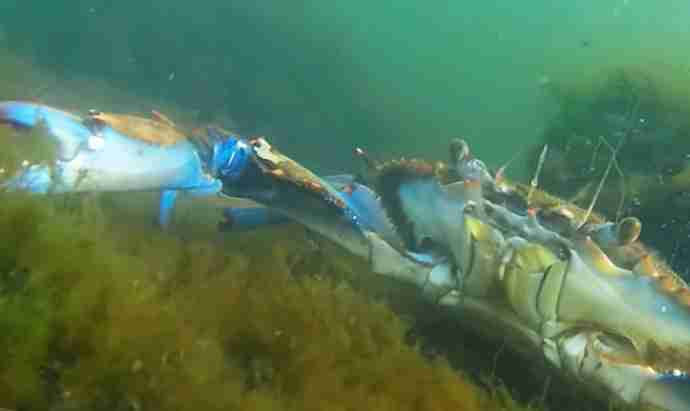 An Italian scientific discovery is shaking up the fishing world : the blue crab (common name of Callinectes sapidus , a crustacean native to the American Atlantic coast), now an invasive presence in our lagoons, has been found infected by a parasite that compromises its quality and food safety. The researchers from the Istituto Zooprofilattico Sperimentale delle Venezie ( IZSVe ) detected the presence of the Hematodinium parasite . This small organism, once it has penetrated the crab ‘s body , triggers a series of reactions that lead to the so-called ” bitter crab disease ” ( from the English Bitter Crab Disease ). The parasite feeds on the animal’s energy reserves , weakening it and altering the flavor of its meat, making it bitter and unappetizing:
An Italian scientific discovery is shaking up the fishing world : the blue crab (common name of Callinectes sapidus , a crustacean native to the American Atlantic coast), now an invasive presence in our lagoons, has been found infected by a parasite that compromises its quality and food safety. The researchers from the Istituto Zooprofilattico Sperimentale delle Venezie ( IZSVe ) detected the presence of the Hematodinium parasite . This small organism, once it has penetrated the crab ‘s body , triggers a series of reactions that lead to the so-called ” bitter crab disease ” ( from the English Bitter Crab Disease ). The parasite feeds on the animal’s energy reserves , weakening it and altering the flavor of its meat, making it bitter and unappetizing:
An impact on health and the economy:
Although Hematodinium is not harmful to humans , the consumption of raw or undercooked blue crab may pose other health risks, such as gastrointestinal infections caused by other bacteria present on the crustacean . Therefore, it is strongly recommended to consume blue crab only after adequate cooking . Investigations conducted by the IZSVe have highlighted a significant spread of the parasite in the lagoons of the Northern Adriatic, with particularly high infection rates in some areas. In particular, specimens from Emilia Romagna showed a greater presence of the parasite, with negative consequences on the vitality and commercial value of the crabs. In addition to representing a threat to the fishing sector, the spread of Hematodinium could have negative consequences on the ecosystem of the lagoons. In fact, the parasite could also infect other species of crustaceans, altering the natural balance of these environments. To address this emergency, it is necessary to intensify controls on blue crabs, both during fishing and marketing. Furthermore, it is essential to raise consumer awareness of the importance of consuming fresh and well-cooked seafood.
The Future of the Blue Crab:
At this time, it is not yet clear what the long-term impact of this infection will be on the blue crab population. Further research is needed to better understand the biology of the parasite and develop effective strategies to combat it. The discovery of the Hematodinium parasite represents a new challenge for the fishing industry and for the protection of consumer health . It is essential to act in a coordinated and timely manner to contain the spread of the infection and safeguard the sustainability of this important economic sector.
Sources:
- https://www.izsvenezie.it/granchio-blu-parassita-hematodinium/
- https://www.izsvenezie.it/granchio-blu-minaccia-risorsa-alimentare/
- https://apps-afsc.fisheries.noaa.gov/Quarterly/jas2007/jasfeaturelead.htm
#bluecrab #parasite #crabs #scientificstudy #italy #consumer




